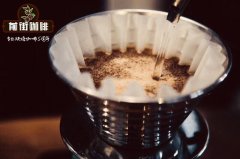How are the coffee beans in Brazil, a coffee-producing country in South America, as mellow as chocolate nuts?

Professional coffee knowledge exchange more coffee bean information please follow the coffee workshop (Wechat official account cafe_style)
Qianjie-introduction of coffee producing areas in Brazil
The terrain of Brazil is very obvious, with a vast Amazon plain in the north, like a vibrant green leaf, higher terrain in the south, hills in the middle, and the famous Brazilian plateau on the southeastern edge. Brazilian coffee beans come from the mountains of southeastern Brazil.
After coffee was introduced into Brazil, it was only planted on a small scale in the early stage, and coffee farms appeared after it extended to the south. Coffee was grown on a commercial scale in Rio de Janeiro (Rio for short). Located in the coastal area of southeastern Brazil, Rio belongs to the tropical rain forest climate, with high temperature all the year round, small annual and daily temperature difference, and relatively uniform seasonal distribution. That's why coffee can be grown here on a large scale.
The early prosperity of Brazilian coffee cultivation is inseparable from slavery, whether local slaves or slaves imported from Africa, are the main force of Brazilian coffee production. Britain banned the introduction of African slaves to Brazil in 1850. By the end of slavery in 1888, Brazilian coffee production remained stable.
After that, there was a relatively chaotic situation in the coffee market, coupled with the strange characteristics of Brazilian coffee production which was high and low in one year, and the sudden attack of black frost, which made the Brazilian coffee production extremely unstable at the end of the 20th century and the beginning of the 21st century.
As Brazil is a large plantation, coffee picking is mostly industrial machines, usually no matter whether the coffee beans are all ripe or not, even the coffee pulp will be directly removed, the method is very poor, resulting in low quality of coffee. However, some plantations plant Arabica seeds at high altitudes in pursuit of excellent quality, picking all coffee beans manually, and only in the 1990s did they introduce Brazilian half-sun drying or local washing to treat raw beans. make the coffee quality enough to compete with other boutique coffee in the world.
Brazil's high-quality coffee beans usually come from large plantations, while other shoddy coffee cannot be found, but not all large plantations produce boutique coffee. As mentioned above, it is impossible to produce boutique coffee by mechanized "rough peeling".
Brazilian coffee flavor: mellow and sweet, low acidity, chocolate nut flavor, elegant and delicious.
Knowledge: most coffee grows in the equator between the Tropic of Cancer and the Tropic of Cancer. Coffee planting belt and origin will have a great influence on its flavor.
In short: Qianjie is a coffee research hall, happy to share the knowledge about coffee with you, we share unreservedly just to make more friends fall in love with coffee, and there will be three low-discount coffee activities every month. The reason is that Qianjie wants to make more friends drink the best coffee at the lowest price, which has been Qianjie's tenet for 6 years!
END
Important Notice :
前街咖啡 FrontStreet Coffee has moved to new addredd:
FrontStreet Coffee Address: 315,Donghua East Road,GuangZhou
Tel:020 38364473
- Prev

What are the characteristics of South American coffee beans? is the flavor of South American coffee beans more balanced?
For more information on coffee beans, please follow the front street of Coffee Workshop (official Wechat account cafe_style)-Coffee producing areas in South America. Brazil accounts for 1/3 of the world's coffee sales, with 17 states producing coffee in Brazil, with the largest production in Parana, Sao Paulo, Lairaz Gerais and Esp í rito Santo. There are many kinds of Brazilian coffee.
- Next

Apart from Arabica, is there any coffee bean, iron pickup, coffee, a weak woman with a pleasant flavor?
Professional coffee knowledge exchange more coffee bean information please follow the coffee workshop (Wechat official account cafe_style) front street-tin card varieties introduction Arabica, in fact, Arabica is one of the world's most important coffee tree species, the world's coffee beans, Arabica coffee accounts for about 65% of 80%, in a sense, many coffee beans are Arabica species, for example
Related
- Beginners will see the "Coffee pull flower" guide!
- What is the difference between ice blog purified milk and ordinary milk coffee?
- Why is the Philippines the largest producer of crops in Liberia?
- For coffee extraction, should the fine powder be retained?
- How does extracted espresso fill pressed powder? How much strength does it take to press the powder?
- How to make jasmine cold extract coffee? Is the jasmine + latte good?
- Will this little toy really make the coffee taste better? How does Lily Drip affect coffee extraction?
- Will the action of slapping the filter cup also affect coffee extraction?
- What's the difference between powder-to-water ratio and powder-to-liquid ratio?
- What is the Ethiopian local species? What does it have to do with Heirloom native species?

